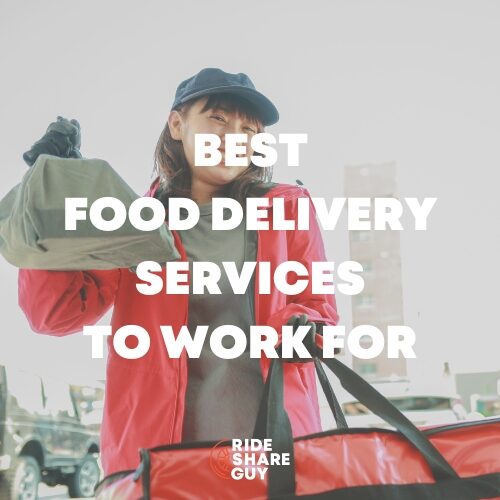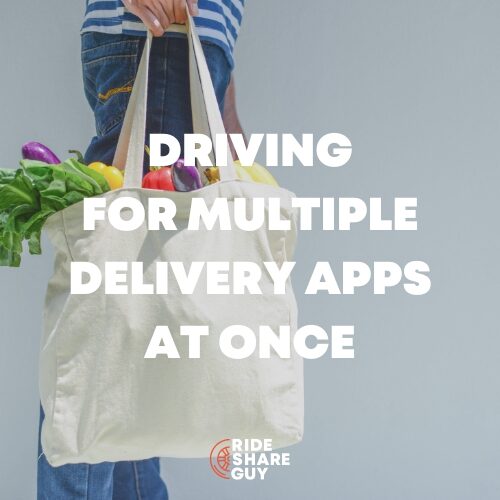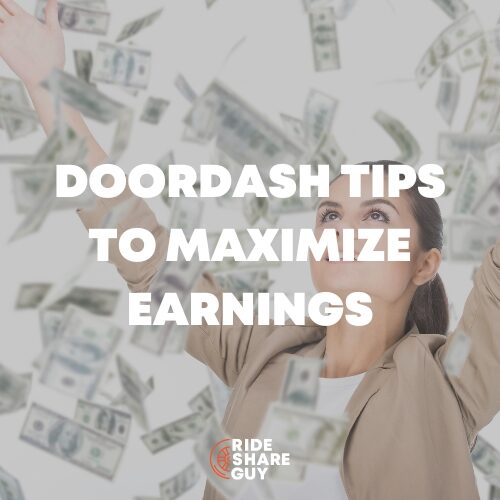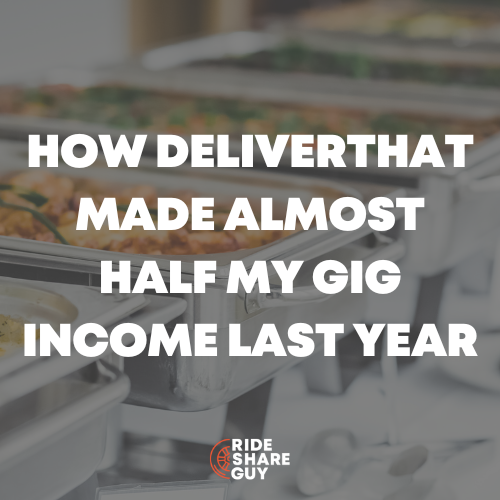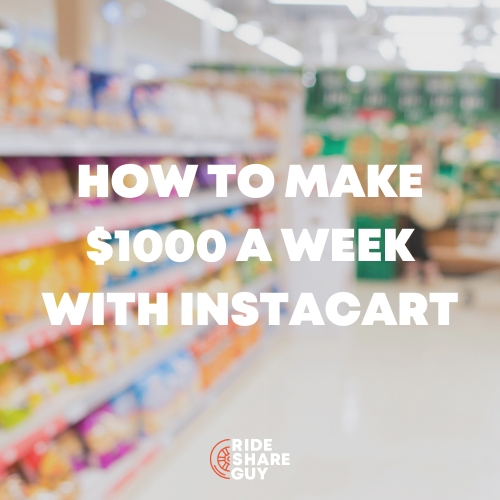Restaurant delivery services have become a major staple for most U.S. households — both for at-home diners and for gig workers.
Every day, fleets of GrubHub, DoorDash, Uber Eats, and Postmates drivers bring home the bacon, fully cooked, for customers who don’t have the time or inclination to make dinner for themselves.
Amid this explosive popularity, there are seemingly hundreds of food delivery apps, all of them reliant on independent contractors. To the untrained eye, they all seem like the same thing. It can be hard for a new gig worker to know which service to work for.
This review article will feature two of the largest delivery companies on the market: Uber Eats and Postmates. Each app provides a similar service for customers, but there are some key differences.
We’ll cover those differences and the similarities between the Uber Eats and Postmates apps in terms of pricing, wages, driver requirements, and earning potential. We’ll share the main facets of each food delivery service, and answer the most common questions that readers have.
Uber Eats vs. Postmates: Services
Both Postmates and Uber Eats offer restaurant meal delivery by drivers or delivery couriers, but there’s a bit more to it than that.
Uber Eats
This food delivery app is owned by the same company as the Uber driver rideshare app.
Uber Eats operates in most of the cities that have Uber X (rideshare) coverage, but not all of them. In medium-sized markets or larger, you’ll likely find Uber Eats.
Like Postmates, Uber Eats delivers food to the customer’s doorstep — via car, scooter, or bike delivery in select areas that allow bicycle couriers.
Drop-off options vary. In some cities, contactless delivery is allowed although customers are encouraged to meet the driver at the door. In some busier areas, a customer may even be asked to meet the driver at the curb — in cities where parking can be expensive or cumbersome.
Postmates
Postmates delivery allows customers to order meals, groceries, or other non-food items from just about anywhere — within driving range.
This includes drug stores, grocery stores, and restaurants, both partnered and non-partnered. Customers who place an order at a non-partner restaurant will pay for it upfront in the Postmates app but the driver will need to formally place and process the order on-site.
When doing an order drop-off, the driver must hand it off directly to the Postmates customer. There is no option to leave it at the door or make a contactless delivery.
Uber Eats vs. Postmates: Pay
Drivers tend to make similar earnings with either app. There isn’t one delivery app that has the monopoly on major cheapskates or fat tippers.
However, there are some differences in how driver pay, incentives, and other perks are structured.
Uber Eats
Uber Eats wages and base delivery fees can vary by city, but most drivers will see an average booking fee of around $5.
Total pay is based on estimated delivery time, driving distance and delivery address, total mileage, and tips. Uber will calculate potential tips in the total estimated payout for deliveries.
While Uber will take a cut of the booking fees, drivers will keep 100% of their tips.
Uber has guaranteed hourly wages ranging from $8 to $12, but in practice, most drivers earn quite a bit more. Especially in busy markets like Los Angeles, Chicago, or Seattle.
Additionally, Uber Eats has “Boost” and “Surge” pricing features as a way to incentivize drivers to work during high-demand periods.
Postmates
Postmates drivers earn a base amount or service fee that is calculated based on the total order dollar amount.
Unlike Uber Eats, Postmates couriers can’t easily figure out what the percentage is, nor can a Postmates driver see any estimated tip potential.
The Postmates delivery fee typically ranges from $3.99 to $5.99, and drivers will keep 100% of their tips. Postmates guarantees a minimum hourly rate of $12, but drivers can and do regularly earn more.
During peak times or periods of high demand, Postmates can earn more through what is called blitz pricing. Here, drivers can increase their total earnings by 40% or more.
Uber Eats vs. Postmates: Sign-Up Process
The signup process for either app service is similar, but we’ll go over the specifics for each.
Uber Eats
Uber Eats drivers must be at least 19 years old, or 21 or older in some markets like Canada. You will need to pass a background check and meet the app’s driving and vehicle requirements.
In some instances, you can use an older vehicle (even a 1998 model) but for most drivers, you’ll need to meet newer, location-specific vehicle requirements for your city.
Uber drivers must also be able to lift at least 30 pounds.
In some metro areas, couriers as young as 18 can do Uber Eats and make deliveries via bicycle or scooter.
You can sign up online and then complete the signup process in the Uber driver app. You’ll need your name, address, Social Security number (SSN), driver’s license, or state-issued ID card number, required vehicle documents, and to read and agree to the terms of service.
If you have all the information and a clean background check, it’s possible to register and start making deliveries within 1 to 3 business days. For existing Uber X rideshare drivers, the process could be even quicker.
Postmates
The process is quite simple to sign up for Postmates. You can sign up from the website, or by downloading the free delivery app. You must be at least 18 years old to sign up for Postmates, and in some markets, the minimum age requirement may be 19 or 21.
Postmates will ask you for some basic information about your driver profile and about the vehicle you’ll use to make deliveries. This includes name, email, phone number, current address, Social Security number (SSN), driver’s license number, and vehicle type.
The app will review your information, and if you meet the basic requirements someone from Postmates will reach out to you to authorize a background check. You’ll also need to upload a profile photo (can be just a selfie) and review and sign their terms of service.
After you’ve completed these steps and passed a background check, Postmates will send you a prepaid card and an insulated food delivery bag. In the event you need to place and pay for a customer order (at a non-Postmates partner restaurant), you will need this card.
Once you’ve received this Postmates kit, you’re ready to log in and pick up your first order.
Uber Eats vs. Postmates: Driver Requirements
Uber Eats
Requirements will vary depending on the mode of transportation. For cars, the vehicle must be at least a 1998 model — and in some markets, the car must be even newer.
The driver must have a valid license, vehicle insurance that meets minimum state requirements, and at least one (1) year of experience driving in the U.S.
Delivering for Uber Eats via scooters, it must have a motor of 50cc or less and not be able to drive faster than 30 mph.
There are no specific bicycle model requirements, but the courier must select “Biking” as their transportation method when they sign up.
Postmates
The process is quite simple for Postmates. Drivers must be at least 18 and pass a background check (with their driver’s license number provided). That’s it.
There are no restrictions imposed on the type of vehicle you drive, and Postmates does not actively verify your driver’s insurance or car registration. Drivers do not have to submit a copy or other documented proof.
Uber Eats vs. Postmates: Order Process
For both apps, the customer logs into the app or website and orders what they want from the featured restaurant or merchant.
But for drivers, it’s less straightforward with how those orders get fulfilled in the Postmates versus Uber app. We’ll go over the main differences.
Uber Eats
The order process is much simpler with Uber Eats delivery.
Unlike Postmates, Uber Eats drivers deliver only restaurant food and the food is ready when the driver arrives at the restaurant. Diners can only place an order at a featured, partner restaurant that can receive orders and order payments through the Uber Eats app.
This means Uber Eats drivers should have no downtime where they have to place the order and wait for the kitchen to prepare it. However, delays can still happen (i.e., traffic delays a driver) and some restaurants have started waiting for the driver to arrive before they begin making the order.
Postmates
Postmates has a wide range of merchant delivery partners. With some partnerships, the restaurant can receive the customer’s order through the app. They’ll get a notification and can prepare the meal and have it ready for the delivery person.
For other orders, the courier needs to place the order and pay for it in-store using a prepaid Postmates PEX card. This is similar to how DoorDash drivers order and pay for orders at non-partner restaurants.
This can mean, unfortunately, a fair bit of waiting around at the restaurant.
Uber Eats vs. Postmates: App Experience
Uber Eats
For customers, there are two separate Uber apps: one for rides and one for ordering food. For drivers and couriers, however, there’s just one Uber driver app.
This is actually a good thing, as it allows drivers to seamlessly transition between the two services. Many drivers will do Uber Eats during lunch and dinner hours, and then just do rideshare during the off hours.
The Uber driver app has an overall 4.6-star rating in Google Play based on over 3.7 million reviews. The iOS app version has a similar 4.5-star rating based on over 590,000 driver reviews.
Postmates
The Postmates delivery app is available for both Androids and iPhones. Previously there was a Postmates fleet app for delivery drivers, but that went away in 2021 with Uber’s acquisition of Postmates.
It has an average 4.8-star rating on iTunes based on over 1.9 million user reviews.
In the Google Play Store, it has lower marks with an average 4.3-star rating based on over 218,000 reviews. There are user comments about bugs and crashes, however, the app and review scores have improved over the past couple of years.
Uber Eats vs. Postmates: Demand
Uber Eats
As of September 2023, Uber Eats had a 23% market share among all U.S. food delivery apps, second only to DoorDash with its whopping 65 share of the market.
Postmates
In a general sense, there’s less overall demand for Postmates because it’s less available to consumers. It’s available in fewer markets and less popular overall.
As of September 2023, Postmates had a 2% market share for all food delivery services in the U.S.
Driver’s Take
Postmates and Uber Eats are two of the best food delivery apps on the market, and both offer gig workers a solid side hustle to earn extra cash.
Uber Eats is more broadly available than Postmates and integrates nicely with the Uber X app, offering contractors an easy way to navigate between the two Uber services to maximize their earnings.
Additionally, Uber Eats orders are paid for and prepared before the driver arrives for pick-up, which minimizes waiting-around time.
But this doesn’t make Uber Eats an easy homerun. Hourly wages are similar between both apps, and Postmates has less stringent requirements when it comes to minimum driver age, vehicle eligibility, or vehicle-related documentation.
If you qualify, try both and see what you think. Every driver’s experience is unique.
